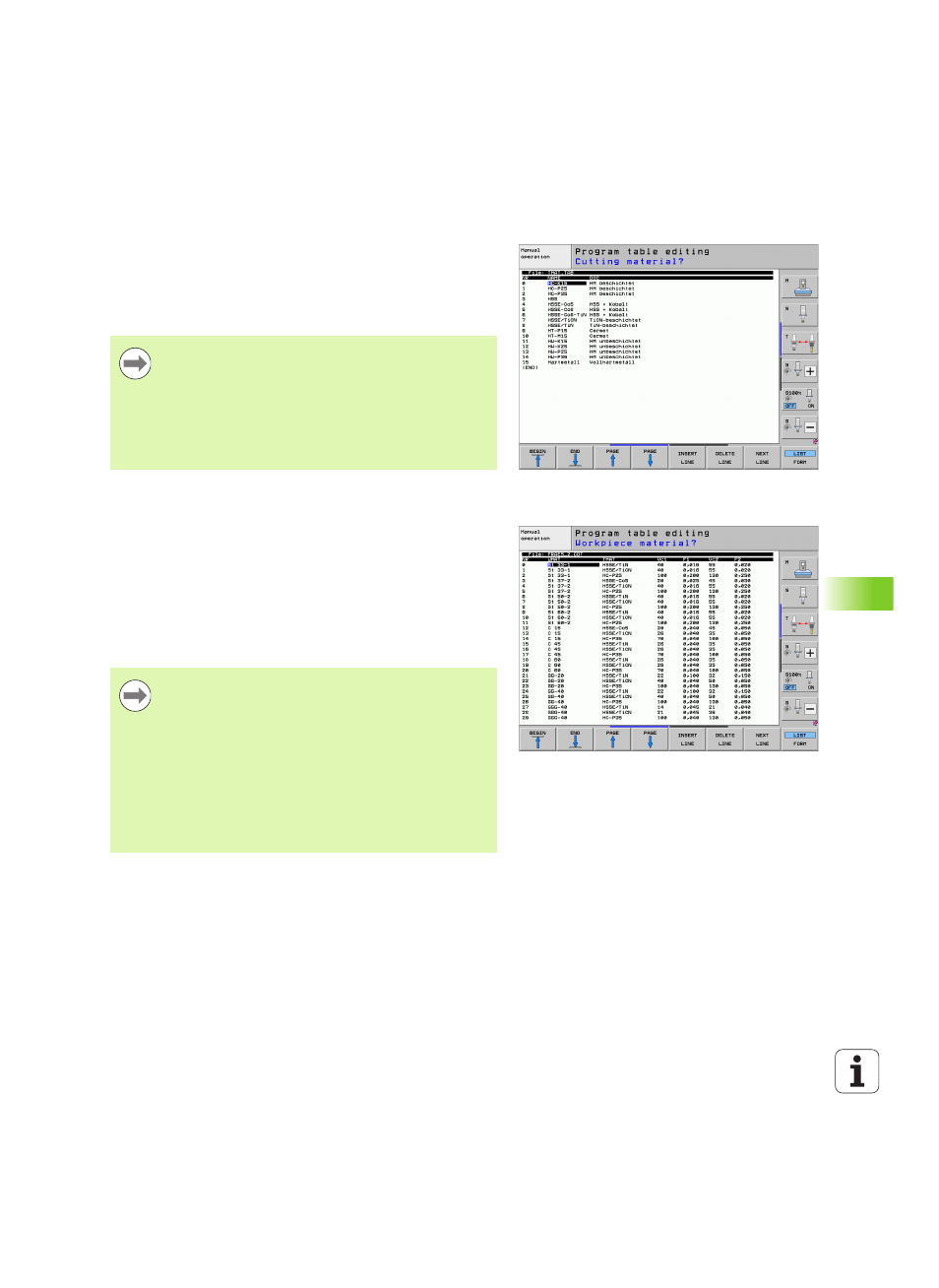Table for tool cutting materials, Table for cutting data, 11 .9 w o rk ing with cut ting data tables – HEIDENHAIN iTNC 530 (60642x-04) ISO programming User Manual
Page 415

HEIDENHAIN iTNC 530
415
11
.9
W
o
rk
ing
with
cut
ting
data
tables
Table for tool cutting materials
Tool cutting materials are defined in the TMAT.TAB table. TMAT.TAB
is stored in the TNC:\ directory and can contain as many material
names as you want (see figure). The name of the cutting material type
can have up to 16 characters (including spaces). The TNC displays the
NAME column when you are defining the tool cutting material in the
TOOL.T tool table.
Table for cutting data
Define the workpiece material/cutting material combinations with the
corresponding cutting data in a file table with the file name extension
.CDT; see figure. You can freely configure the entries in the cutting
data table. Besides the obligatory columns NR, WMAT and TMAT, the
TNC can also manage up to four cutting speed (V
C
) / feed rate (F)
combinations.
The standard cutting data table FRAES_2.CDT is stored in the
directory TNC:\. You can edit FRAES_2.CDT, or add as many new
cutting-data tables as you wish.
If you change the standard tool cutting material table, you
must copy it into a new directory. Otherwise your
changes will be overwritten during a software update by
the HEIDENHAIN standard data. Define the path in the
TNC.SYS file with the code word TMAT= (see
"Configuration file TNC.SYS", page 418).
To avoid losing data, save the TMAT.TAB file at regular
intervals.
If you change the standard cutting data table, you must
copy it into a new directory. Otherwise your changes will
be overwritten during a software update by the
HEIDENHAIN standard data (see "Configuration file
TNC.SYS", page 418).
All of the cutting data tables must be stored in the same
directory. If the directory is not the standard directory
TNC:\, then behind the code word PCDT= you must enter
the path in which your cutting data is stored.
To avoid losing data, save your cutting data tables at
regular intervals.
